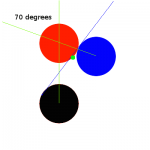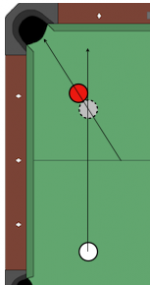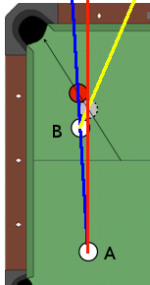Using the graphic that I posted if the cut angle is larger than 65 degrees produced from the blue line and the desired object ball path black line, shooting from cueball position B, is impossible without masse.
I see. The shot in the diagram is less than 90 degrees so it should still be possible just difficult without masse. But throw will effect it though. If I am looking at this correctly then the cut angle is changing as the cue ball moves along the blue line. It is a different shot completely by the time it gets within 4" of the object ball. Thanks for the clarification



